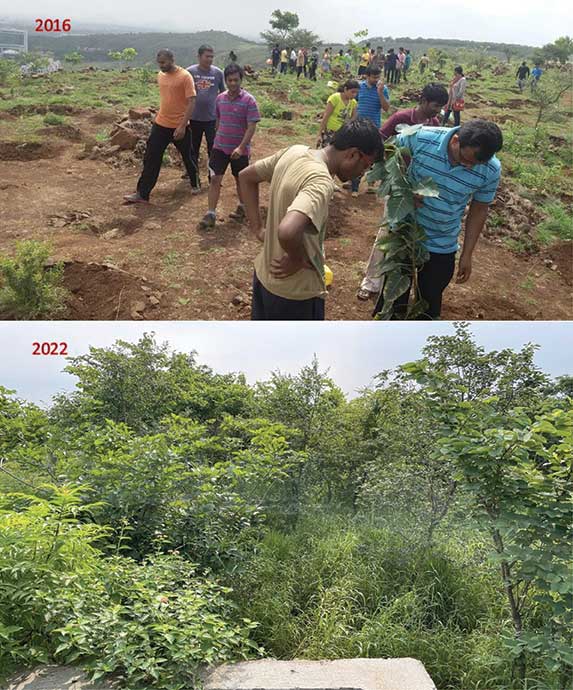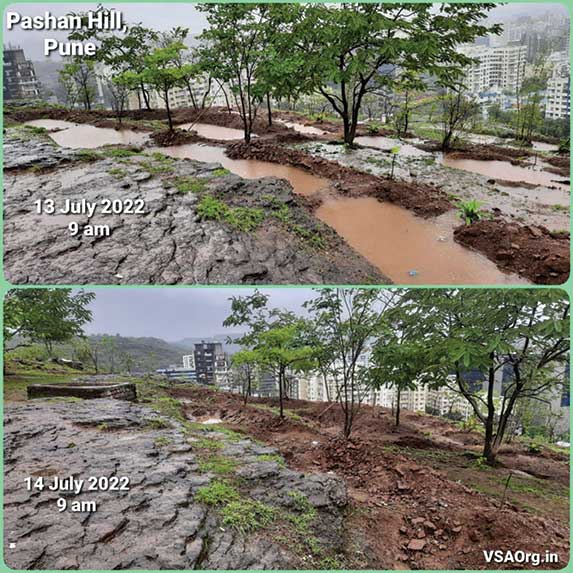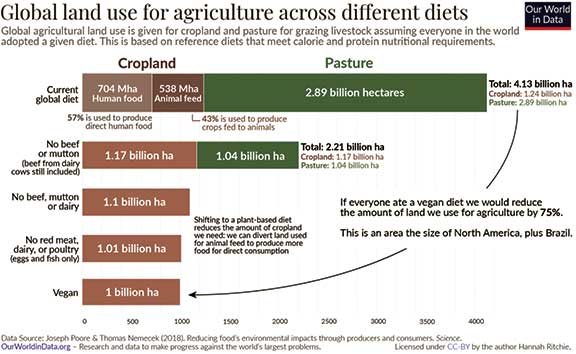Seema Agarwal
I will soon complete my half century and only within the last five years in Pune, I have witnessed many bizarre incidents, which have evoked a high level of insecurity and fear in me. The environmentalists of Pune attribute these incidents to the mass cutting down of trees, destruction of hills, encroachment of rivers and streams. Is this climate change?
- We see boats on the streets in Smart City during rains. Rivers are encroached for construction and concrete roads with no space for rainwater to percolate, increase the flow of water to low lying areas causing flooding and loss of life.
- We used to enjoy heavy rains during Ganpati Visarjan, but now Diwali is also celebrated in rains. Our Raavan refuses to burn!
- Witnessing three seasons in the same day is common now – mornings are cold, afternoons too hot and in the evenings it rains.
- Huge landslides (in June 2021) destroyed all roads around our village farm, landlocking us for a week.
- Cancer, heart stroke, high BP, diabetes is common even among the younger generation in my extended family.

The recent heat wave (October 2022) in Europe resulted in the death of someone I knew. This was an Indian accustomed to high temperatures, but couldn’t acclimatize to the heat wave in another part of the world!
I now agree one hundred per cent with Mahatma Gandhi – “Earth has enough for everyone’s needs, but not everyone’s greed.”
Mindless consumption by humans, the greed for better, faster, convenient means to living, eating, travelling is eating into the planet’s resources like never before. What started as extraction of fossil fuels, coal, oil and gas to facilitate movement, extended to converting forestlands for agriculture, cattle breeding, processing of foods to extend their life, to transporting everything over long distances to feed the over-consuming economy. And governments continue to incentivize fossil fuel production and consumption.
Since the first detection of greenhouse gases in the 18th century, the situation has only been spiralling out of control. The global change in weather conditions and temperatures can only be detected in decades, not years. Climate change, hence, remains a subject of global worry but of little concern to the average individual.
While COVID is not something we like to remember, it did give us a few positives – Nature took back its space, there were animals on roads, dolphins and whales were seen closer to the shores. Ironically, COVID’s spread at the international level is also a result of climate change. CDC (Centers for Disease control and Prevention, USA) states – ‘As the difference between environmental temperatures and human body temperatures narrows, new fungal diseases may emerge as fungi become more adapted to surviving in humans.’
A quick glance at https://climate.nasa.gov/ will give you blaring facts about global temperatures, ocean warming, rising sea levels, carbon dioxide emissions, melting ice. The recent seven years, 2015 to 2021 were the warmest on record. In India, the rainy season of three months is now spread across five, and it’s not consistent showers but sporadic cloud bursts that have a huge impact, endangering lives, food crops, health and wellbeing.
During 2021-22, extreme weather events caused devastation across every continent. Floods in Australia, Brazil, China, western Europe, Pakistan, South Africa, and Wildfires in Canada, USA, Greece, Algeria, Italy, Spain caused huge damage to life and property. Record high temperatures were witnessed in many countries during the same period, the world also witnessed major landslides, which wash off the topsoil that takes centuries to build. Making the land barren and threatening food production. With these events, at least the influence of climate change has been quantified.

Human activity is the main cause of climate change. People burn fossil fuels and convert forest lands into agricultural lands. But agriculture also is extremely vulnerable to climate change. Combined with global population and income growth, it’s threatening food security everywhere. Higher temperatures reduce yields of desirable crops while encouraging weed and pest proliferation. Heavy rains change precipitation patterns with the likelihood of short-run crop failures and long-run production declines.
Converting a forest into a farmland, leads to the destruction of biodiversity, extinction of endemic species, and breakdown of local ecological systems. The process begins with complete deforestation of the hills, increasing the temperatures of the land and disturbing Nature’s balance.
The connection between food and climate change has a direct relation with human food consumption and growing habits that changed since the Industrial Revolution.
a) In the agrarian era, all the food consumed by humans across the world was grown and consumed locally. Farmers grew all that they needed for self-consumption and only the surplus was traded.
b) Food was grown organically with a symbiotic relationship between birds, bees, cattle, and nature elements. There was no invention of chemical fertilizers and pesticides. Entry of toxins in food, through chemical fertilizers, started post world war. Large farmlands have mono crops today with hybrid seeds, heavily dependent on external inputs to get guaranteed yields.
c) The need to preserve food in the form of pickles and dried vegetables was to cater to hunger during natural disasters. Today, with advancement in food storage and processing technology, we demand all produce, all round the year, in any corner of the world.
d) High demand for animal and dairy products further increases the need for grasslands, pastures for grazing and growing fodder for cattle.
The Green Revolution was promoted for food security, but this came at a cost. With the invention and use of NPK fertilizers, pesticides, and climate resilient seed technology, food that was grown with almost no external inputs, now needs significant inputs from industries located several hundred or even thousands of miles away. And these inputs are subsidized.
Chemical based agriculture is also water intensive. Use of tractors in agriculture compacts the soil and water percolation is hampered. The micro organisms in soil which play a major role in transporting nutrients from the soil to the plants are killed during tilling and spraying of herbicides. The use of hybrid seeds with heavy dependence on chemical fertilizers and pesticides further deteriorates the land and water. The traditional agriculture system followed crop patterns based on seasons, but with unpredictable weather changes, farmlands are under pressure to give consistent quality high yields.
Our food choices too pressurize farmers and the agro-industry to grow and serve non-seasonal food all year round. We pride in consuming winter crops like carrots, peas, and cauliflowers or apples from California and kiwi from New Zealand, anytime of the year. Thanks to advancements in storage technology (cold storages and preservatives), food that was only available during its harvest season is now available throughout the year, all over the world, travelling thousands of miles, consuming fuel and energy extracted from nature, and this natural resource cost is not built into the cost paid by the end user.
Further, the ever-growing demand for animal products – dairy and meat – is taking the largest share of all farmlands. If everyone shifted to a plant-based diet, we would reduce global land use for agriculture by 75%. This is the land used for grazing and growing crops for cattle. The expansion of land for agriculture is the leading driver of deforestation and biodiversity loss. The chart below shows how a change in food choice can help convert farmlands into bio-diverse forest zones.

The demand for animal products has evolved with years of being bombarded with the nutritional value and protein content present in these products. This created demand led to the growth of this industry, which today is the largest contributor to greenhouse gases. It’s difficult for any government to reverse the damage. Only individual will and the resolution to make a difference will bring a change. Same is the case with the demand for processed foods like Maggi and Kelloggs, which are replacing the healthy fresh parathas on our plates. If more and more people switch to conscious consumption, plant based diets, eating local, eating seasonal and demanding chemical free food, the supply side economics will change. The demand for organic/natural, vegan foods is growing and we see many vegan cafes and organic stores coming up, which proves the power of consumer choice and demand.
Small steps taken at the individual level can bring about changes for a better, greener future. For example, an individual’s act of trying to reverse climate change by growing trees on a barren hill in Pune, has taken mammoth shape in 15 years as Vasundhara Swachata Abhiyaan. Thousands of volunteers joined in, giving just two hours every week, planting native tree saplings and taking care of them all through the year. This Pashan hill in Pune is today greener and alive with many birds and butterflies. It is also serving as a big catchment area during high rainfall, enabling a hundred per cent percolation of water within a day, preventing floods. Vasundhara volunteers also work on river clean up, river restoration and promotion of natural farming, all these are projects that will help mitigate climate change effects.
Climate change does not happen overnight and it cannot be stopped or reversed immediately, but a start is needed urgently and it can be done with simple steps like mindful consumption, conscious demands, compassion for nature and the willingness to act responsibly.
Greta, a little girl from a small town in Sweden, made her voice reach the highest levels of power, with passionate concern and a belief that she can be the change. If she can, we can too.
The author is Director, Sustainable Living Integrated Solutions Pvt Ltd, Pune. She also manages a website www.merafarmer.com, which provides access to toxin-free products and sessions on healthy lifestyle. She can be reached at agrawal77seema@gmail.com.
